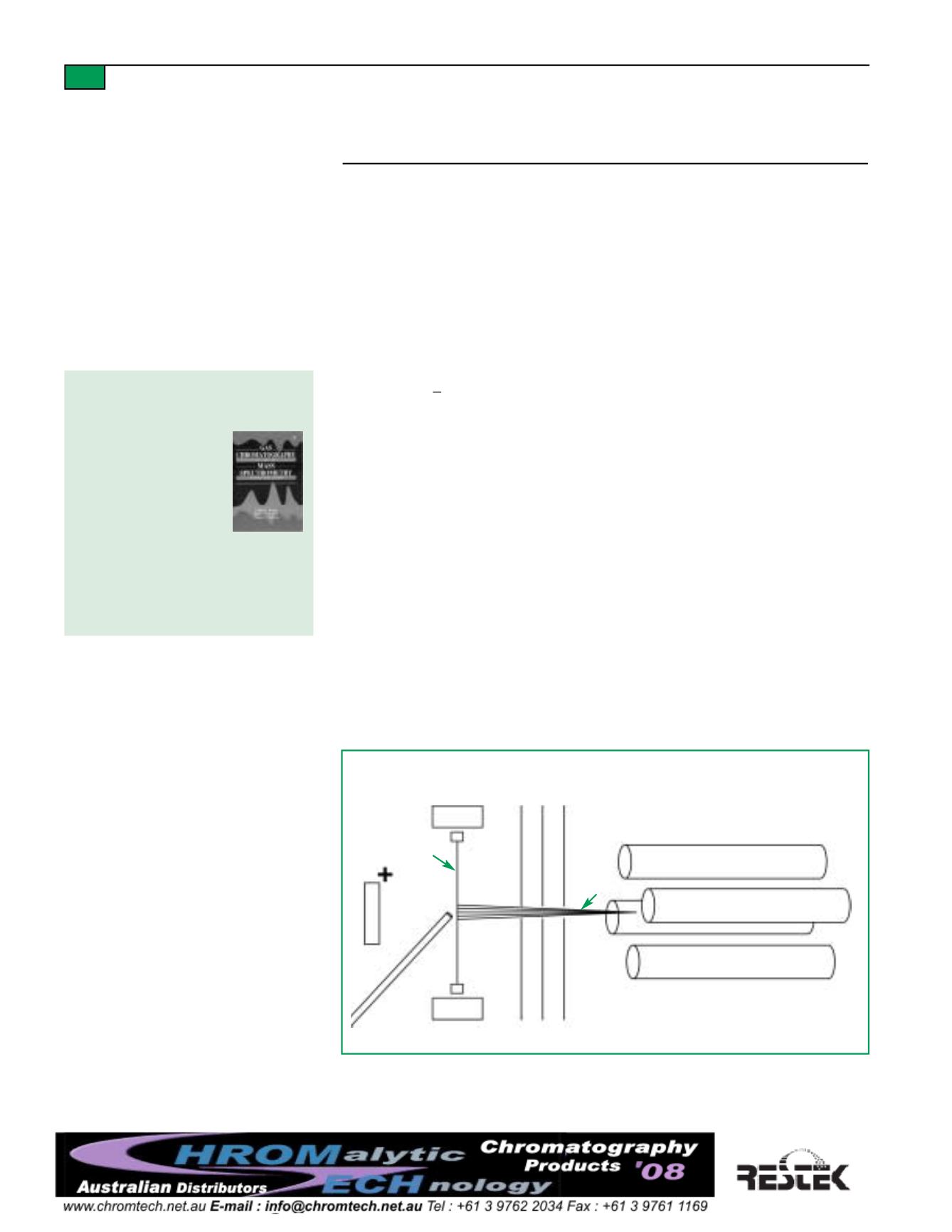
30
GC/MS Operation
Mass spectrometry (MS) is themost common detection system used forVOC analysis. The
MS provides unique spectral information for accurately identifying components eluting from
the capillary column.As a compound exits the column it is bombardedwith high-energy
electrons and is broken into structurally significant charged fragments. These fragments are
separated by theirmass-to-charge ratios in the analyzer, to produce a spectral pattern (i.e.,
fingerprint) unique to the compound. To confirm the identity of the compound the spectral
fingerprint ismatched to a library of known spectra. By knowing the spectral patterns for
compounds in the target list, the appropriatemasses for quantification can be chosen.
For analyzing volatile compounds in environmental samples, themost common types ofMS
operating systems are the quadrupole system and the ion trap system.
QuadrupoleOperation
A narrow bore (<0.25mm ID) capillary column can be inserted into the source of the
quadrupoleMS in electron impact mode (EI). The carrier gas flowing through the column,
approximately 1mL/min., is quickly swept away under the high vacuum of the sourcewhile
analytes exiting the column are bombardedwith a stream of electrons at 70eV.
Electromagnets begin focusing the ions (Figure 28). Positively charged fragments are pushed
away from the positively charged repeller, toward a series of focusing lenses. The first lens,
the draw-out plate or extractor, accelerates the ions, then the ion focus lens further acceler-
ates the ions and squeezes them into a tight beam of charged particles before they enter the
mass analyzer – an array of four parallel rods, or quadrupoles. Other plates (i.e., a ground
plate), if present, are connected to a ground that discharges the defocused ions, to prevent
them from causing charge interferencewith the ion focus lens. In thisway ions that are not
correctly directed down the quadrupoles are discarded. Electromagnetic fields produced by a
combination of direct current (DC) and an oscillating radio frequency (RF), enables ions that
have a specificmass-to-charge ratio to pass through the quadrupoles to the detector, forcing
these ions into a spiral, or corkscrew-shaped, three-dimensional sinewave that passes
through the center of the quadrupole arrangement (Figure 29).As theDC/RFwaves are
swept up or down, specificmass-to-charge ions strike the electronmultiplier (detector),
which translates ions to electrons. The electrons bounce off the dynodes (walls) of the elec-
tronmultiplier, generating a cascade of electrons. These electrons are exchanged to photons,
which aremeasured as a current by the photomultiplier.
11
Figure 28.
Electromagnets focus the ions produced from fragmented analytemolecules.
IonBeam
Fragments
Extractor
GroundPlate
IonFocus
Magnet
Magnet
Anode
Quadrupoles
Filaments
Electron
Beam
Repeller
Lenses
CapillaryColumn
11. F.G. Kitson, B.S. Larsen&C.N. McEwen. Gas Chromatography andMass Spectrometry:
APractical Guide, Academic Press, NewYork. 1996.
{
GasChromatography&Mass
Spectrometry, APractical Guide
• Separation conditions
for numerous compound
types, derivatized and
underivatized.
• How to interpret mass-
spectral data, with
examples.
F.G. Kitson, B.S. Larsen andC.N.
McEwen, Academic Press, 1996,
381pp., ISBN 0-12-483385-3
cat.# 20497


